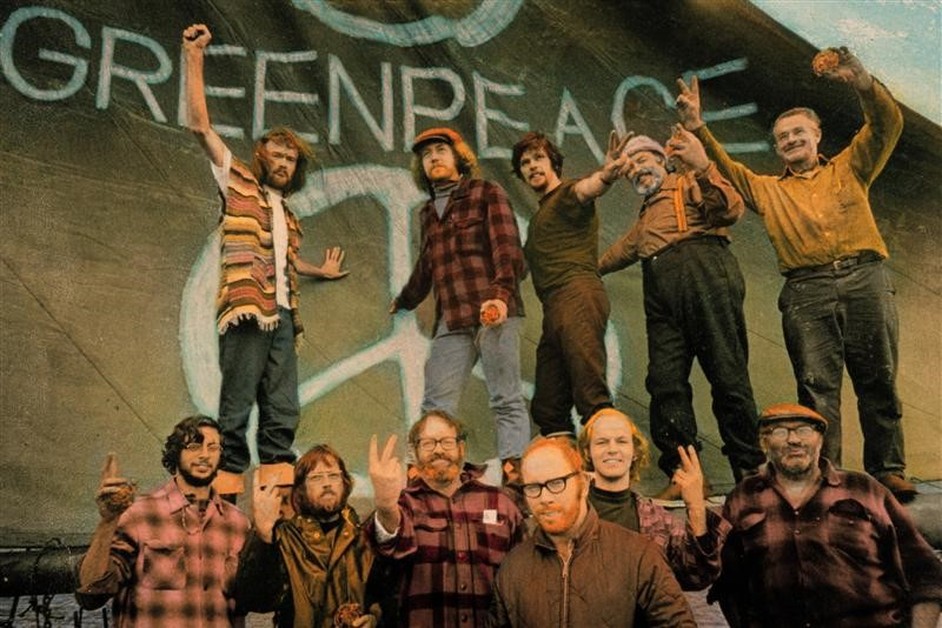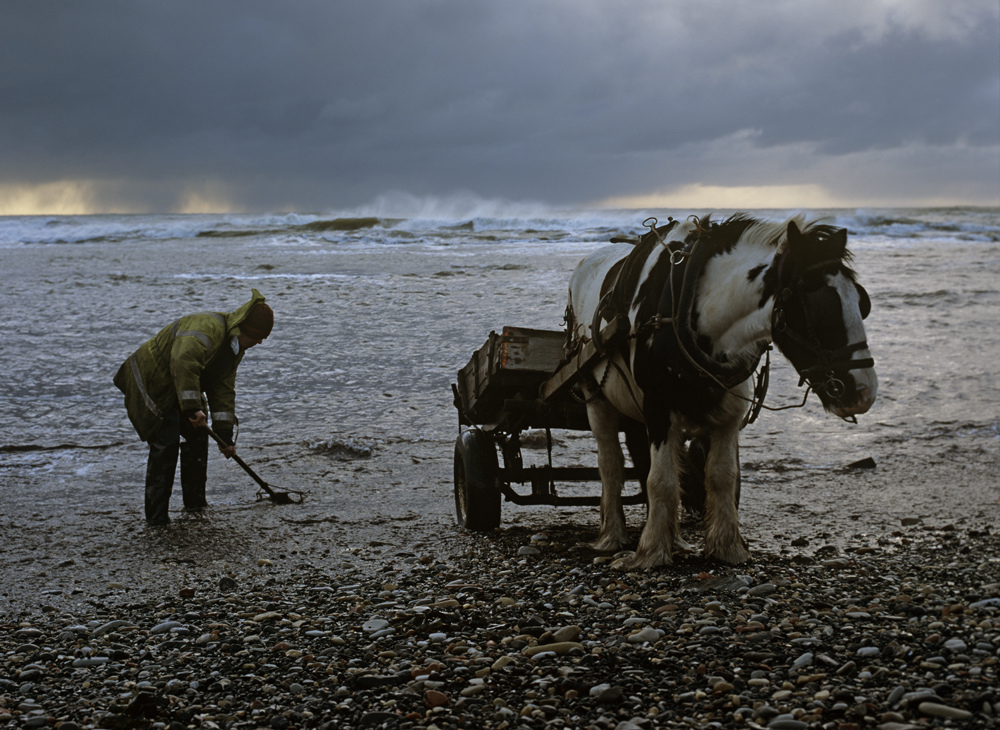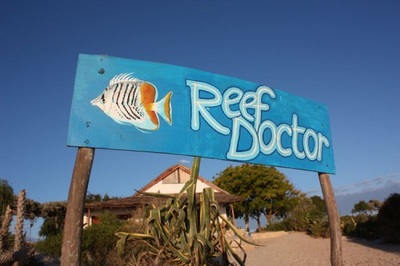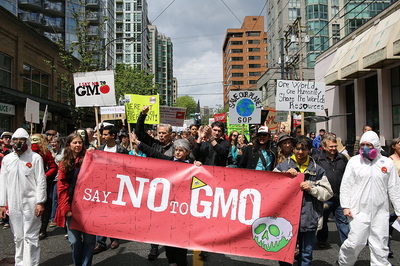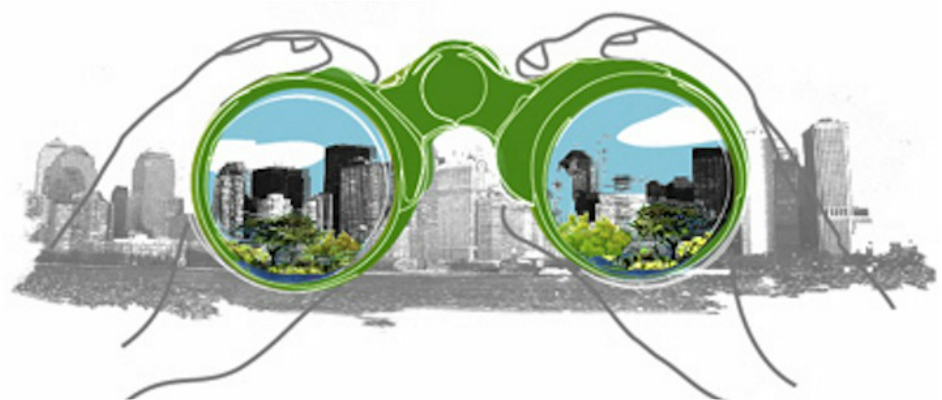Environmentalism

Environmentalism or Environmental rights is a broad philosophy, ideology and social movement regarding concerns for environmental protection and improvement of the health of the environment, particularly as the measure for this health seeks to incorporate the concerns of non-human elements.
Environmentalism advocates the lawful preservation, restoration and/or improvement of the natural environment, and may be referred to as a movement to control pollution or protect plant and animal diversity. For this reason, concepts such as a land ethic, environmental ethics, biodiversity, ecology and the biophilia hypothesis figure predominantly.
At its crux, environmentalism is an attempt to balance relations between humans and the various natural systems on which they depend in such a way that all the components are accorded a proper degree of sustainability.
The exact measures and outcomes of this balance is controversial and there are many different ways for environmental concerns to be expressed in practice. Environmentalism and environmental concerns are often represented by the color green, but this association has been appropriated by the marketing industries and is a key tactic of greenwashing. Environmentalism is opposed by anti-environmentalism, which says that the Earth is less fragile than some environmentalists maintain, and portrays environmentalism as overreacting to the human contribution to climate change or opposing human advancement.
Environmentalism advocates the lawful preservation, restoration and/or improvement of the natural environment, and may be referred to as a movement to control pollution or protect plant and animal diversity. For this reason, concepts such as a land ethic, environmental ethics, biodiversity, ecology and the biophilia hypothesis figure predominantly.
At its crux, environmentalism is an attempt to balance relations between humans and the various natural systems on which they depend in such a way that all the components are accorded a proper degree of sustainability.
The exact measures and outcomes of this balance is controversial and there are many different ways for environmental concerns to be expressed in practice. Environmentalism and environmental concerns are often represented by the color green, but this association has been appropriated by the marketing industries and is a key tactic of greenwashing. Environmentalism is opposed by anti-environmentalism, which says that the Earth is less fragile than some environmentalists maintain, and portrays environmentalism as overreacting to the human contribution to climate change or opposing human advancement.
Definitions

Definitions Environmentalism denotes a social movement that seeks to influence the political process by lobbying, activism, and education in order to protect natural resources and ecosystems. The word was first coined in 1922.
An environmentalist is a person who may speak out about our natural environment and the sustainable management of its resources through changes in public policy or individual behavior.
This may include supporting practices such as informed consumption, conservation initiatives, investment in renewable resources, improved efficiencies in the materials economy, transitioning to new accounting paradigms such as Ecological economics and renewing and revitalizing our connections with non-human life.
An environmentalist is a person who may speak out about our natural environment and the sustainable management of its resources through changes in public policy or individual behavior.
This may include supporting practices such as informed consumption, conservation initiatives, investment in renewable resources, improved efficiencies in the materials economy, transitioning to new accounting paradigms such as Ecological economics and renewing and revitalizing our connections with non-human life.

In various ways (for example, grassroots activism and protests), environmentalists and environmental organizations seek to give the natural world a stronger voice in human affairs.
In general terms, environmentalists advocate the sustainable management of resources, and the protection (and restoration, when necessary) of the natural environment through changes in public policy and individual behavior. In its recognition of humanity as a participant in ecosystems, the movement is centered around ecology, health, and human rights.
While the term environmentalism focuses more on the environmental and nature-related aspects of green ideology and politics, ecologism as a term combines the ideology of social ecology and environmentalism. Ecologism as a term is more commonly used in continental European languages while environmentalism is more commonly used in English but the words have slightly different connotations.
In general terms, environmentalists advocate the sustainable management of resources, and the protection (and restoration, when necessary) of the natural environment through changes in public policy and individual behavior. In its recognition of humanity as a participant in ecosystems, the movement is centered around ecology, health, and human rights.
While the term environmentalism focuses more on the environmental and nature-related aspects of green ideology and politics, ecologism as a term combines the ideology of social ecology and environmentalism. Ecologism as a term is more commonly used in continental European languages while environmentalism is more commonly used in English but the words have slightly different connotations.
History - see also: Conservation movement and Timeline of history of environmentalism
A concern for environmental protection has recurred in diverse forms, in different parts of the world, throughout history. For example, in Europe, King Edward I of England banned the burning of sea-coal by proclamation in London in 1272, after its smoke had become a problem. The fuel was so common in England that this earliest of names for it was acquired because it could be carted away from some shores by the wheelbarrow.
Early environmental legislation
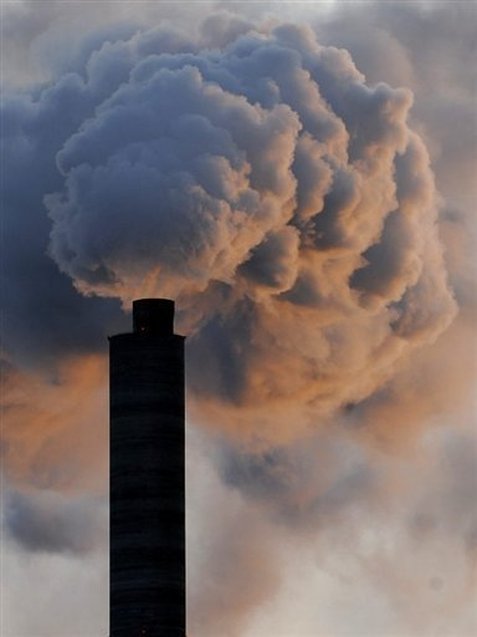
The origins of the environmental movement lay in the response to increasing levels of smoke pollution in the atmosphere during the Industrial Revolution. The emergence of great factories and the concomitant immense growth in coal consumption gave rise to an unprecedented level of air pollution in industrial centers; after 1900 the large volume of industrial chemical discharges added to the growing load of untreated human waste.
The first large-scale, modern environmental laws came in the form of Britain's Alkali Acts, passed in 1863, to regulate the deleterious air pollution (gaseous hydrochloric acid) given off by the Leblanc process, used to produce soda ash. An Alkali inspector and four sub-inspectors were appointed to curb this pollution. The responsibilities of the inspectorate were gradually expanded, culminating in the Alkali Order 1958 which placed all major heavy industries that emitted smoke, grit, dust and fumes under supervision.
The late 19th century also saw the passage of the first wildlife conservation laws. The zoologist Alfred Newton published a series of investigations into the Desirability of establishing a 'Close-time' for the preservation of indigenous animals between 1872 and 1903. His advocacy for legislation to protect animals from hunting during the mating season led to the formation of the Royal Society for the Protection of Birds and influenced the passage of the Sea Birds Preservation Act in 1869 as the first nature protection law in the world.
The first large-scale, modern environmental laws came in the form of Britain's Alkali Acts, passed in 1863, to regulate the deleterious air pollution (gaseous hydrochloric acid) given off by the Leblanc process, used to produce soda ash. An Alkali inspector and four sub-inspectors were appointed to curb this pollution. The responsibilities of the inspectorate were gradually expanded, culminating in the Alkali Order 1958 which placed all major heavy industries that emitted smoke, grit, dust and fumes under supervision.
The late 19th century also saw the passage of the first wildlife conservation laws. The zoologist Alfred Newton published a series of investigations into the Desirability of establishing a 'Close-time' for the preservation of indigenous animals between 1872 and 1903. His advocacy for legislation to protect animals from hunting during the mating season led to the formation of the Royal Society for the Protection of Birds and influenced the passage of the Sea Birds Preservation Act in 1869 as the first nature protection law in the world.
|
For most of the century from 1850 to 1950, however, the primary environmental cause was the mitigation of air pollution. The Coal Smoke Abatement Society was formed in 1898 making it one of the oldest environmental NGOs. It was founded by artist Sir William Blake Richmond, frustrated with the pall cast by coal smoke. Although there were earlier pieces of legislation, the Public Health Act 1875 required all furnaces and fireplaces to consume their own smoke. It also provided for sanctions against factories that emitted large amounts of black smoke. The provisions of this law were extended in 1926 with the Smoke Abatement Act to include other emissions, such as soot, ash and gritty particles and to empower local authorities to impose their own regulations.
It was, however, only under the impetus of the Great Smog of 1952 in London, which almost brought the city to a standstill and may have caused upward of 6,000 deaths that the Clean Air Act 1956 was passed and pollution in the city was finally brought to an end. Financial incentives were offered to householders to replace open coal fires with alternatives (such as installing gas fires), or for those who preferred, to burn coke instead (a byproduct of town gas production) which produces minimal smoke. 'Smoke control areas' were introduced in some towns and cities in which only smokeless fuels could be burnt and power stations were relocated away from cities. The act formed an important impetus to modern environmentalism, and caused a rethinking of the dangers of environmental degradation to people's quality of life. |
Great Smog of 1952 in London
|
First environmental movements

Early interest in the environment was a feature of the Romantic movement in the early 19th century. The poet William Wordsworth travelled extensively in the Lake District and wrote that it is a "sort of national property in which every man has a right and interest who has an eye to perceive and a heart to enjoy".
Systematic efforts on behalf of the environment only began in the late 19th century; it grew out of the amenity movement in Britain in the 1870s, which was a reaction to industrialization, the growth of cities, and worsening air and water pollution.
Starting with the formation of the Commons Preservation Society in 1865, the movement championed rural preservation against the encroachments of industrialisation. Robert Hunter, solicitor for the society, worked with Hardwicke Rawnsley, Octavia Hill, and John Ruskin to lead a successful campaign to prevent the construction of railways to carry slate from the quarries, which would have ruined the unspoilt valleys of Newlands and Ennerdale. This success led to the formation of the Lake District Defence Society (later to become The Friends of the Lake District).
Systematic efforts on behalf of the environment only began in the late 19th century; it grew out of the amenity movement in Britain in the 1870s, which was a reaction to industrialization, the growth of cities, and worsening air and water pollution.
Starting with the formation of the Commons Preservation Society in 1865, the movement championed rural preservation against the encroachments of industrialisation. Robert Hunter, solicitor for the society, worked with Hardwicke Rawnsley, Octavia Hill, and John Ruskin to lead a successful campaign to prevent the construction of railways to carry slate from the quarries, which would have ruined the unspoilt valleys of Newlands and Ennerdale. This success led to the formation of the Lake District Defence Society (later to become The Friends of the Lake District).
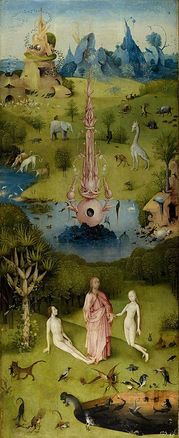
In 1893 Hill, Hunter and Rawnsley agreed to set up a national body to coordinate environmental conservation efforts across the country; the "National Trust for Places of Historic Interest or Natural Beauty" was formally inaugurated in 1894. The organisation obtained secure footing through the 1907 National Trust Bill, which gave the trust the status of a statutory corporation. and the bill was passed in August 1907.
An early "Back-to-Nature" movement, which anticipated the romantic ideal of modern environmentalism, was advocated by intellectuals such as John Ruskin, William Morris, George Bernard Shaw and Edward Carpenter, who were all against consumerism, pollution and other activities that were harmful to the natural world. The movement was a reaction to the urban conditions of the industrial towns, where sanitation was awful, pollution levels intolerable and housing terribly cramped. Idealists championed the rural life as a mythical Utopia and advocated a return to it. John Ruskin argued that people should return to a small piece of English ground, beautiful, peaceful, and fruitful. We will have no steam engines upon it . . . we will have plenty of flowers and vegetables . . . we will have some music and poetry; the children will learn to dance to it and sing it.
Practical ventures in the establishment of small cooperative farms were even attempted and old rural traditions, without the "taint of manufacture or the canker of artificiality", were enthusiastically revived, including the Morris dance and the maypole.
An early "Back-to-Nature" movement, which anticipated the romantic ideal of modern environmentalism, was advocated by intellectuals such as John Ruskin, William Morris, George Bernard Shaw and Edward Carpenter, who were all against consumerism, pollution and other activities that were harmful to the natural world. The movement was a reaction to the urban conditions of the industrial towns, where sanitation was awful, pollution levels intolerable and housing terribly cramped. Idealists championed the rural life as a mythical Utopia and advocated a return to it. John Ruskin argued that people should return to a small piece of English ground, beautiful, peaceful, and fruitful. We will have no steam engines upon it . . . we will have plenty of flowers and vegetables . . . we will have some music and poetry; the children will learn to dance to it and sing it.
Practical ventures in the establishment of small cooperative farms were even attempted and old rural traditions, without the "taint of manufacture or the canker of artificiality", were enthusiastically revived, including the Morris dance and the maypole.
These ideas also inspired various environmental groups in the UK, such as the Royal Society for the Protection of Birds, established in 1889 by Emily Williamson as a protest group to campaign for greater protection for the indigenous birds of the British Isles. The Society attracted growing support from the suburban middle-classes as well as support from many other influential figures, such as the ornithologist Professor Alfred Newton. By 1900, public support for the organisation had grown, and it had over 25,000 members. The Garden city movement incorporated many environmental concerns into its urban planning manifesto; the Socialist League and The Clarion movement also began to advocate measures of nature conservation.
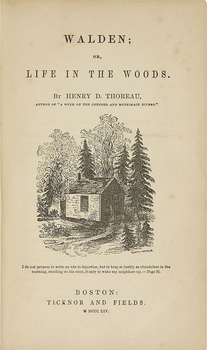
The movement in the United States began in the late 19th century, out of concerns for protecting the natural resources of the West, with individuals such as John Muir and Henry David Thoreau making key philosophical contributions. Thoreau was interested in peoples' relationship with nature and studied this by living close to nature in a simple life. He published his experiences in the book Walden, which argues that people should become intimately close with nature. Muir came to believe in nature's inherent right, especially after spending time hiking in Yosemite Valley and studying both the ecology and geology. He successfully lobbied congress to form Yosemite National Park and went on to set up the Sierra Club in 1892. The conservationist principles as well as the belief in an inherent right of nature were to become the bedrock of modern environmentalism.
In the 20th century, environmental ideas continued to grow in popularity and recognition. Efforts were starting to be made to save some wildlife, particularly the American bison. The death of the last passenger pigeon as well as the endangerment of the American bison helped to focus the minds of conservationists and popularize their concerns. In 1916 the National Park Service was founded by US President Woodrow Wilson.
In the 20th century, environmental ideas continued to grow in popularity and recognition. Efforts were starting to be made to save some wildlife, particularly the American bison. The death of the last passenger pigeon as well as the endangerment of the American bison helped to focus the minds of conservationists and popularize their concerns. In 1916 the National Park Service was founded by US President Woodrow Wilson.
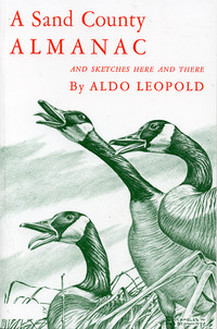
The Forestry Commission was set up in 1919 in Britain to increase the amount of woodland in Britain by buying land for afforestation and reforestation. The commission was also tasked with promoting forestry and the production of timber for trade. During the 1920s the Commission focused on acquiring land to begin planting out new forests; much of the land was previously used for agricultural purposes. By 1939 the Forestry Commission was the largest landowner in Britain.
During the 1930s the Nazis had elements that were supportive of animal rights, zoos and wildlife, and took several measures to ensure their protection. In 1933 the government created a stringent animal-protection law and in 1934, Das Reichsjagdgesetz (The Reich Hunting Law) was enacted which limited hunting. Several Nazis were environmentalists (notably Rudolf Hess), and species protection and animal welfare were significant issues in the regime. In 1935, the regime enacted the "Reich Nature Protection Act" (Reichsnaturschutzgesetz). The concept of the Dauerwald (best translated as the "perpetual forest") which included concepts such as forest management and protection was promoted and efforts were also made to curb air pollution.
In 1949, A Sand County Almanac by Aldo Leopold was published. It explained Leopold’s belief that humankind should have moral respect for the environment and that it is unethical to harm it. The book is sometimes called the most influential book on conservation.
During the 1930s the Nazis had elements that were supportive of animal rights, zoos and wildlife, and took several measures to ensure their protection. In 1933 the government created a stringent animal-protection law and in 1934, Das Reichsjagdgesetz (The Reich Hunting Law) was enacted which limited hunting. Several Nazis were environmentalists (notably Rudolf Hess), and species protection and animal welfare were significant issues in the regime. In 1935, the regime enacted the "Reich Nature Protection Act" (Reichsnaturschutzgesetz). The concept of the Dauerwald (best translated as the "perpetual forest") which included concepts such as forest management and protection was promoted and efforts were also made to curb air pollution.
In 1949, A Sand County Almanac by Aldo Leopold was published. It explained Leopold’s belief that humankind should have moral respect for the environment and that it is unethical to harm it. The book is sometimes called the most influential book on conservation.

Throughout the 1950s, 1960s, 1970s and beyond, photography was used to enhance public awareness of the need for protecting land and recruiting members to environmental organizations. David Brower, Ansel Adams and Nancy Newhall created the Sierra Club Exhibit Format Series, which helped raise public environmental awareness and brought a rapidly increasing flood of new members to the Sierra Club and to the environmental movement in general. "This Is Dinosaur" edited by Wallace Stegner with photographs by Martin Litton and Philip Hyde prevented the building of dams within Dinosaur National Monument by becoming part of a new kind of activism called environmentalism that combined the conservationist ideals of Thoreau, Leopold and Muir with hard-hitting advertising, lobbying, book distribution, letter writing campaigns, and more.
The powerful use of photography in addition to the written word for conservation dated back to the creation of Yosemite National Park, when photographs persuaded Abraham Lincoln to preserve the beautiful glacier carved landscape for all time. The Sierra Club Exhibit Format Series galvanized public opposition to building dams in the Grand Canyon and protected many other national treasures. The Sierra Club often led a coalition of many environmental groups including the Wilderness Society and many others. After a focus on preserving wilderness in the 1950s and 1960s, the Sierra Club and other groups broadened their focus to include such issues as air and water pollution, population concern, and curbing the exploitation of natural resources.
The powerful use of photography in addition to the written word for conservation dated back to the creation of Yosemite National Park, when photographs persuaded Abraham Lincoln to preserve the beautiful glacier carved landscape for all time. The Sierra Club Exhibit Format Series galvanized public opposition to building dams in the Grand Canyon and protected many other national treasures. The Sierra Club often led a coalition of many environmental groups including the Wilderness Society and many others. After a focus on preserving wilderness in the 1950s and 1960s, the Sierra Club and other groups broadened their focus to include such issues as air and water pollution, population concern, and curbing the exploitation of natural resources.
Post-war expansion
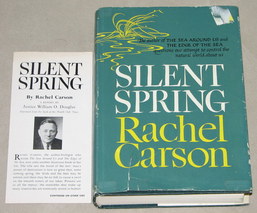
In 1962, Silent Spring by American biologist Rachel Carson was published. The book cataloged the environmental impacts of the indiscriminate spraying of DDT in the US and questioned the logic of releasing large amounts of chemicals into the environment without fully understanding their effects on ecology or human health.
The book suggested that DDT and other pesticides may cause cancer and that their agricultural use was a threat to wildlife, particularly birds.The resulting public concern led to the creation of the United States Environmental Protection Agency in 1970 which subsequently banned the agricultural use of DDT in the US in 1972.
The limited use of DDT in disease vector control continues to this day in certain parts of the world and remains controversial. The book's legacy was to produce a far greater awareness of environmental issues and interest into how people affect the environment. With this new interest in environment came interest in problems such as air pollution and petroleum spills, and environmental interest grew. New pressure groups formed, notably Greenpeace and Friends of the Earth, as well as notable local organizations such as the Wyoming Outdoor Council, which was founded in 1967.
The book suggested that DDT and other pesticides may cause cancer and that their agricultural use was a threat to wildlife, particularly birds.The resulting public concern led to the creation of the United States Environmental Protection Agency in 1970 which subsequently banned the agricultural use of DDT in the US in 1972.
The limited use of DDT in disease vector control continues to this day in certain parts of the world and remains controversial. The book's legacy was to produce a far greater awareness of environmental issues and interest into how people affect the environment. With this new interest in environment came interest in problems such as air pollution and petroleum spills, and environmental interest grew. New pressure groups formed, notably Greenpeace and Friends of the Earth, as well as notable local organizations such as the Wyoming Outdoor Council, which was founded in 1967.
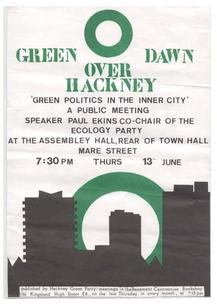
In the 1970s, the environmental movement gained rapid speed around the world as a productive outgrowth of the counterculture movement.
The world's first political parties to campaign on a predominantly environmental platform were the United Tasmania Group Tasmania, Australia and the Values Party of New Zealand. The first green party in Europe was the Popular Movement for the Environment, founded in 1972 in the Swiss canton of Neuchâtel. The first national green party in Europe was PEOPLE, founded in Britain in February 1973, which eventually turned into the Ecology Party, and then the Green Party.
Protection of the environment also became important in the developing world; the Chipko movement was formed in India under the influence of Mohandas Gandhi and they set up peaceful resistance to deforestation by literally hugging trees (leading to the term "tree huggers"). Their peaceful methods of protest and slogan "ecology is permanent economy" were very influential.
The world's first political parties to campaign on a predominantly environmental platform were the United Tasmania Group Tasmania, Australia and the Values Party of New Zealand. The first green party in Europe was the Popular Movement for the Environment, founded in 1972 in the Swiss canton of Neuchâtel. The first national green party in Europe was PEOPLE, founded in Britain in February 1973, which eventually turned into the Ecology Party, and then the Green Party.
Protection of the environment also became important in the developing world; the Chipko movement was formed in India under the influence of Mohandas Gandhi and they set up peaceful resistance to deforestation by literally hugging trees (leading to the term "tree huggers"). Their peaceful methods of protest and slogan "ecology is permanent economy" were very influential.
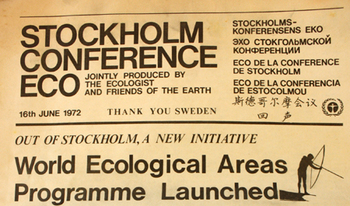
Another milestone in the movement was the creation of an Earth Day. Earth Day was first observed in San Francisco and other cities on March 21, 1970, the first day of spring. It was created to give awareness to environmental issues.
On March 21, 1971, United Nations Secretary-General U Thant spoke of a spaceship Earth on Earth Day, hereby referring to the ecosystem services the earth supplies to us, and hence our obligation to protect it (and with it, ourselves). Earth Day is now coordinated globally by the Earth Day Network, and is celebrated in more than 175 countries every year.
The UN's first major conference on international environmental issues, the United Nations Conference on the Human Environment (also known as the Stockholm Conference), was held on June 5–16, 1972. It marked a turning point in the development of international environmental politics.
On March 21, 1971, United Nations Secretary-General U Thant spoke of a spaceship Earth on Earth Day, hereby referring to the ecosystem services the earth supplies to us, and hence our obligation to protect it (and with it, ourselves). Earth Day is now coordinated globally by the Earth Day Network, and is celebrated in more than 175 countries every year.
The UN's first major conference on international environmental issues, the United Nations Conference on the Human Environment (also known as the Stockholm Conference), was held on June 5–16, 1972. It marked a turning point in the development of international environmental politics.
By the mid-1970s, many felt that people were on the edge of environmental catastrophe. The Back-to-the-land movement started to form and ideas of environmental ethics joined with anti-Vietnam War sentiments and other political issues. These individuals lived outside normal society and started to take on some of the more radical environmental theories such as deep ecology.
Around this time more mainstream environmentalism was starting to show force with the signing of the Endangered Species Act in 1973 and the formation of CITES in 1975. Significant amendments were also enacted to the United States Clean Air Act and Clean Water Act.
Around this time more mainstream environmentalism was starting to show force with the signing of the Endangered Species Act in 1973 and the formation of CITES in 1975. Significant amendments were also enacted to the United States Clean Air Act and Clean Water Act.
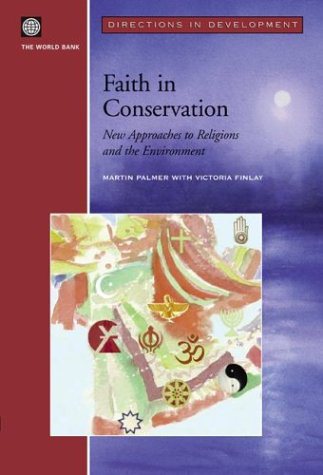
In 1979, James Lovelock, a British scientist, published Gaia: A new look at life on Earth, which put forth the Gaia hypothesis; it proposes that life on earth can be understood as a single organism. This became an important part of the Deep Green ideology. Throughout the rest of the history of environmentalism there has been debate and argument between more radical followers of this Deep Green ideology and more mainstream environmentalists.
During the 1980s the growing awareness of global warming and other climate change issues brought environmentalism into greater public debate. In 1986 the international conservation organisation the World Wildlife Fund renamed itself the Worldwide Fund For Nature to reflect a shift to a more strategic approach. Still known as WWF, however, the organisation brought together religious authorities representing the five major world religions (Buddhism, Christianity, Hinduism, Islam, and Judaism) to prepare the 1986 Assisi Declarations.
These theological statements, published by the WWF and UNEP, identified the responsibilities towards the care of nature expected of followers of each religion thus providing spiritual motivation for environmental action. The full texts, with additional similar declarations from Bahá’ísm, Jainism, Shintoism, Sikhism and Zoroastrianism were later included in the 2003 World Bank publication 'Faith In Conservation'.
During the 1980s the growing awareness of global warming and other climate change issues brought environmentalism into greater public debate. In 1986 the international conservation organisation the World Wildlife Fund renamed itself the Worldwide Fund For Nature to reflect a shift to a more strategic approach. Still known as WWF, however, the organisation brought together religious authorities representing the five major world religions (Buddhism, Christianity, Hinduism, Islam, and Judaism) to prepare the 1986 Assisi Declarations.
These theological statements, published by the WWF and UNEP, identified the responsibilities towards the care of nature expected of followers of each religion thus providing spiritual motivation for environmental action. The full texts, with additional similar declarations from Bahá’ísm, Jainism, Shintoism, Sikhism and Zoroastrianism were later included in the 2003 World Bank publication 'Faith In Conservation'.
Today
|
Environmentalism has changed to deal with new issues such as global warming, overpopulation and genetic engineering. Many youth of today's society are more aware of the state of the planet because they grew up with Earth Day in place.
School Eco Clubs are now working to create new ideals for the future through sustainable schools and other minor changes in student lives like buying organic food, clothing and personal care items. In the future, many of the jobs opening up will have environmentalist aspects. |
UK - An ancient trade (sea-coal) which has sustained workmen in the North since the 7th century has come to an end thanks to council health and safety rules - source
Environmental movement
The environmental movement (a term that sometimes includes the conservation and green movements) is a diverse scientific, social, and political movement. Though the movement is represented by a range of organizations, because of the inclusion of environmentalism in the classroom curriculum, the environmental movement has a younger demographic than is common in other social movements (see green seniors).
Environmentalism as a movement covers broad areas of institutional oppression, including for example: consumption of ecosystems and natural resources into waste, dumping waste into disadvantaged communities, air pollution, water pollution, weak infrastructure, exposure of organic life to toxins, mono-culture, anti-polythene drive (jhola movement) and various other focuses. Because of these divisions, the environmental movement can be categorized into these primary focuses: environmental science, environmental activism, environmental advocacy, and environmental justice.
Environmentalism as a movement covers broad areas of institutional oppression, including for example: consumption of ecosystems and natural resources into waste, dumping waste into disadvantaged communities, air pollution, water pollution, weak infrastructure, exposure of organic life to toxins, mono-culture, anti-polythene drive (jhola movement) and various other focuses. Because of these divisions, the environmental movement can be categorized into these primary focuses: environmental science, environmental activism, environmental advocacy, and environmental justice.
Free market environmentalism - main article: Free-market environmentalism
Free market environmentalism is a theory that argues that the free market, property rights, and tort law provide the best tools to preserve the health and sustainability of the environment. It considers environmental stewardship to be natural, as well as the expulsion of polluters and other aggressors through individual and class action. It has been supported by libertarians and many conservatives.
Evangelical environmentalism - main article: Evangelical environmentalism
Evangelical environmentalism is an environmental movement in the United States in which some Evangelicals have emphasized biblical mandates concerning humanity's role as steward and subsequent responsibility for the caretaking of Creation. While the movement has focused on different environmental issues, it is best known for its focus of addressing climate action from a biblically grounded theological perspective. The Evangelical Climate Initiative argues that human-induced climate change will have severe consequences and impact the poor the hardest, and that God's mandate to Adam to care for the Garden of Eden also applies to evangelicals today, and that it is therefore a moral obligation to work to mitigate climate impacts and support communities in adapting to change.
Preservation and conservation - main article: Conservation movement
Environmental preservation in the United States and other parts of the world, including Australia, is viewed as the setting aside of natural resources to prevent damage caused by contact with humans or by certain human activities, such as logging, mining, hunting, and fishing, often to replace them with new human activities such as tourism and recreation. Regulations and laws may be enacted for the preservation of natural resources - source
Free market environmentalism is a theory that argues that the free market, property rights, and tort law provide the best tools to preserve the health and sustainability of the environment. It considers environmental stewardship to be natural, as well as the expulsion of polluters and other aggressors through individual and class action. It has been supported by libertarians and many conservatives.
Evangelical environmentalism - main article: Evangelical environmentalism
Evangelical environmentalism is an environmental movement in the United States in which some Evangelicals have emphasized biblical mandates concerning humanity's role as steward and subsequent responsibility for the caretaking of Creation. While the movement has focused on different environmental issues, it is best known for its focus of addressing climate action from a biblically grounded theological perspective. The Evangelical Climate Initiative argues that human-induced climate change will have severe consequences and impact the poor the hardest, and that God's mandate to Adam to care for the Garden of Eden also applies to evangelicals today, and that it is therefore a moral obligation to work to mitigate climate impacts and support communities in adapting to change.
Preservation and conservation - main article: Conservation movement
Environmental preservation in the United States and other parts of the world, including Australia, is viewed as the setting aside of natural resources to prevent damage caused by contact with humans or by certain human activities, such as logging, mining, hunting, and fishing, often to replace them with new human activities such as tourism and recreation. Regulations and laws may be enacted for the preservation of natural resources - source


